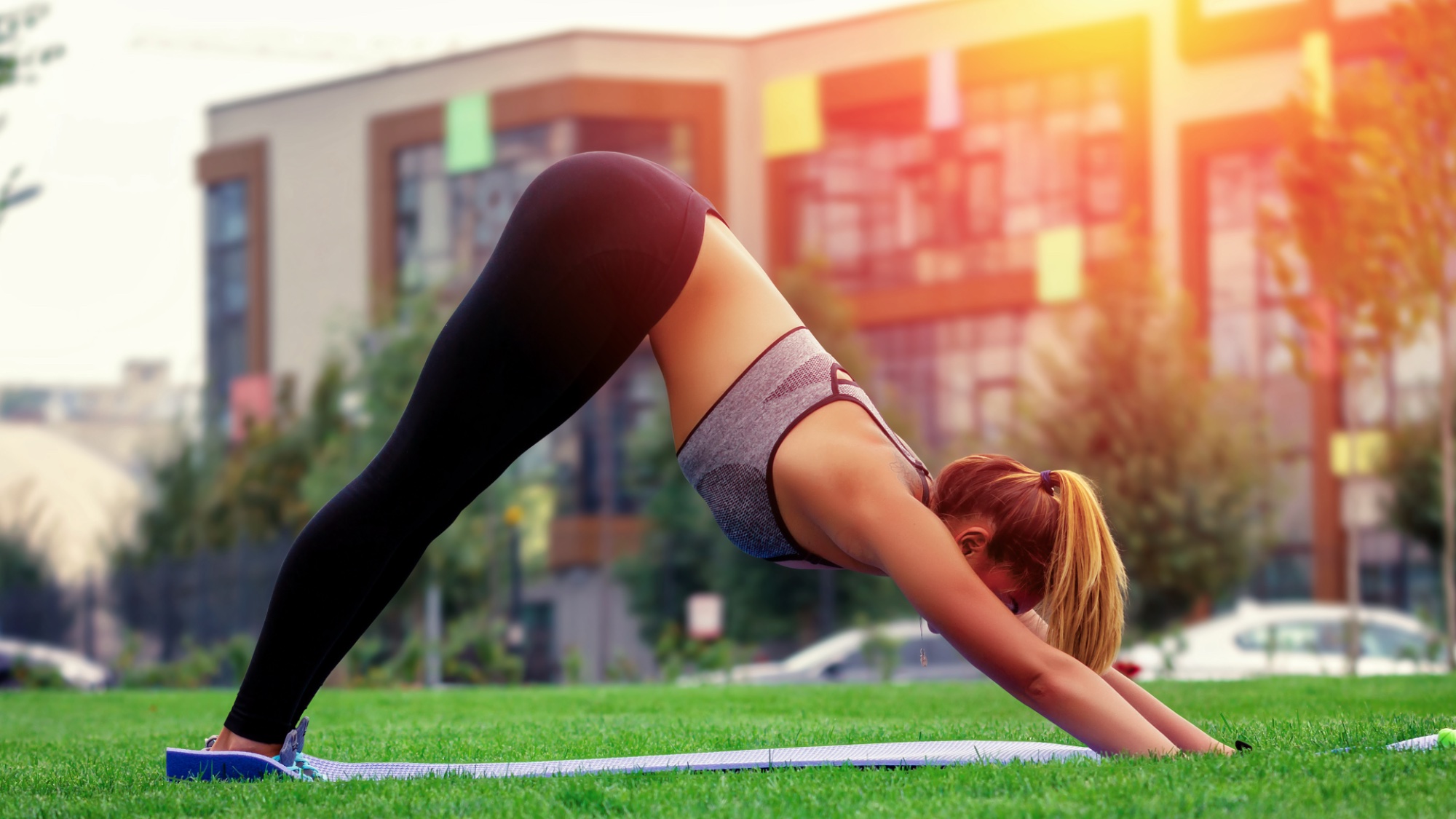
Whether boosting mobility or building upper-body strength, you can use downward-facing dog to your advantage. Down dog, a staple yoga exercise, primarily stretches the upper back, chest, abdomen and shoulders while opening up the muscles along your posterior chain, including the hamstrings. However, it has strengthening properties, too.
When rolling out one of the best yoga mats to teach mobility classes online, I rarely leave downward-facing dog out of the programming. Why? Because this one move can do a heck of a lot for your mind and body, and it’s accessible for most people.But while adding downward dog to your daily stretching or mobility routine can provide a full-body release, there are ways to build upon it to target upper-body strength.

Here are just three ways I use myself.What are the 3 downward dog variations?A post shared by Sam (@hopes_coaching)A photo posted by on Next time you want to increase the intensity of your downward dog, give these three variations a try.Downward dog toe taps Down dog taps engage the upper body and shoulders and require balance as you hold the upside-down V-position using one hand.
You’ll also need to engage your core muscles to stabilize your body as you reach back to tap your ankle with your opposite hand. I like slipping a little slice of abs into my routines where I can!Unlike plank toe taps, try to hold the downward dog position rather than lean forward into a plank. Push into the mat with your hand as you reach back and lift your hips high to deepen the stretch in your hamstrings.
I recommend taking a downward dog refresher first before trying this move.Start in a downward dog position with your hands shoulder-width apart and your feet hip-width apartGently suck your belly toward your spine and draw your heels down toward the matLift your right hand away from the mat and reach toward your left foot while pressing through your left hand. You could also tap your shoulder insteadPlace your right hand onto the mat and repeat on your left sideMove with control.
Keep your hips square throughoutRepeat for 8-12 reps per side and 3-4 sets.Downward dog to pike push-up Pike push-ups are a preparatory exercise for handstands and handstand push-ups, mimicking the overhead press using your bodyweight.Keep your elbows close to your body and try to touch the ground with the crown of your head rather than your forehead; this will help you maintain a vertical movement pattern.
It’s a muscle-torching masterclass whether you use it to mobilize or strengthen.Start in a downward dog position (set up as above)Slightly shift your weight forward and transfer onto the balls of your feet, keeping your hips high and elbows wrapped inBrace your core as you shift forward, then bend both elbows and lower the crown of your head toward the floor in front of your hands. Aim for a tripod position with your hands and headPause at the bottom, then press the ground away and extend both elbowsPush back into your downward-facing dogRepeat for 8-12 reps per side and 3-4 sets.
Downward dog to scap push-upScapula push-ups are the perfect way to prep your shoulders before an upper-body workout, especially movements that include pressing overhead or bar-based work like muscle-ups.As you move through shoulder blade protraction and retraction, try to take your time to maximize activation.The shoulder stabilizer muscles — the rotator cuff — consist of four muscles surrounding and supporting the scapulae.
Scap push-ups help target these muscles, which could reduce your likelihood of developing shoulder injuries.Start in downward dogBrace your core, then slowly shift your weight forward and bend your knees, coming into a tabletop position with shoulders over wristsHover your knees slightly above the floor with toes tuckedWithout bending your elbows, dip your chest toward the ground and draw your shoulder blades together (scapular retraction)Push through your palms and spread your shoulder blades apart (scapular protraction)Lift your hips upward and backward and return to your downward dogRepeat for 8-12 reps per side and 3-4 sets.What is a downward-facing dog good for?(Image credit: Future)Known as Adho Mukha Svanasana in Sanskrit, the downward-facing dog yoga posture stretches the backs of the legs and spine while also working your arms, shoulders and upper back.
The pose offers wrist-strengthening benefits, but I recommend a proper wrist warm-up routine before spending any length of time in the downward dog position. Some yogis even credit downward dog, alongside yoga as a whole, with reducing symptoms of back pain and alleviating anxiety.One hot tip for your downward dog before you try this series: start in a high plank position, then lift your hips back into a downward dog without moving your hands or feet from their spots.
This will help you find the correct "length" of your dog.During a yoga class, downward dog features heavily within the sun salutation series and can be used as an active resting posture during more advanced class programming; several deep breaths in and out through the nose during downward dog can be calming and restorative.Who should avoid downward-facing dog?If you’re suffering from any shoulder or wrist injuries or you have a pre-existing health condition, speak with a qualified yoga instructor or your physician before attempting downward dog and its variations.
Pregnant women should also consult a professional, especially in the later stages of pregnancy. Inversions can sometimes make people feel dizzy, so if you have high or low blood pressure, a second opinion is always recommended.More from Tom's GuideAdding salt to your water is trending, so I tried it — and here's what happened after just two weeksYou can start realigning your hips in just 3 exercises — according to a yoga teacher and strength coachI’ve been walking with a weight vest for 5K every day to help boost my metabolism — here's what happened to my body.














